
The Curculionidae are a family of weevils, commonly called snout beetles or true weevils. They are one of the largest animal families with 6,800 genera and 83,000 species described worldwide. They are the sister group to the family Brentidae.

Weevils are beetles belonging to the superfamily Curculionoidea, known for their elongated snouts. They are usually small – less than 6 mm in length – and herbivorous. Approximately 97,000 species of weevils are known. They belong to several families, with most of them in the family Curculionidae. It also includes bark beetles, which while morphologically dissimilar to other weevils in lacking the distinctive snout, is a subfamily of Curculionidae. Some other beetles, although not closely related, bear the name "weevil", such as the biscuit weevil, which belongs to the family Ptinidae.

Anthonomus is a genus of weevils. This genus includes major agricultural pests such as the boll weevil, strawberry blossom weevil, and pepper weevil, as well as promising biological pest control agents such as Anthonomus santacruzi.
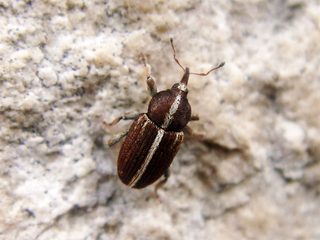
The beetle subfamily Curculioninae is part of the weevil family Curculionidae. It contains over 23,500 described species in 2,200 genera, and is therefore the largest weevil subfamily. Given that the beetle order (Coleoptera) contains about one-quarter of all known organisms, the Curculioninae represent one of the – if not the – most successful radiations of terrestrial Metazoa.

Belidae is a family of weevils, called belids or primitive weevils because they have straight antennae, unlike the "true weevils" or Curculionidae which have geniculate (elbowed) antennae. They are sometimes known as "cycad weevils", but this properly refers to a few species from the genera Parallocorynus and Rhopalotria.

Hylobius is a genus of true weevils. Several Hylobius species are major pests of coniferous trees.
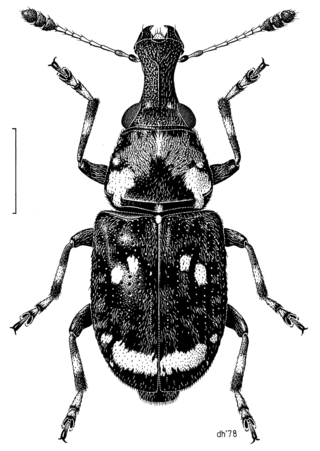
Anthribidae is a family of beetles also known as fungus weevils. The antennae are not elbowed, may occasionally be longer than the body and thread-like, and can be the longest of any members of Curculionoidea. As in the Nemonychidae, the labrum appears as a separate segment to the clypeus, and the maxillary palps are long and projecting.

Baridinae is a subfamily of true weevils (Curculionidae). It was established by Carl Johan Schönherr in 1836. Some 4,300 species in 550 genera are placed here, most of which occur in the New World. A few are economically significant pests, while others are in turn used for biocontrol of invasive plant pests. This subfamily also contains a few endangered species.

Polydrusus formosus the green immigrant leaf weevil, is a species of broad-nosed weevil belonging to the family Curculionidae, subfamily Entiminae.
Gonipterus scutellatus is a species of weevil in the family Curculionidae. It is commonly known as the eucalyptus snout beetle, the eucalyptus weevil or the gum tree weevil. It feeds and breeds on Eucalyptus trees and is endemic to Australia.

Polydrusini is a weevil tribe in the subfamily Entiminae.
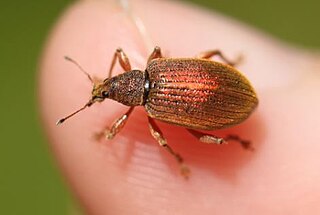
Polydrusus mollis is a species of weevil native to Europe.

Polydrusus cervinus is a species of weevil native to Europe.

Polydrusus pterygomalis is a species of weevil native to Europe.
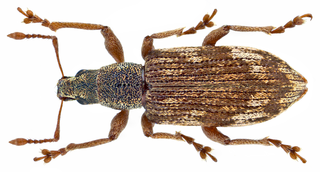
Polydrusus tereticollis is a species of weevil native to Europe.
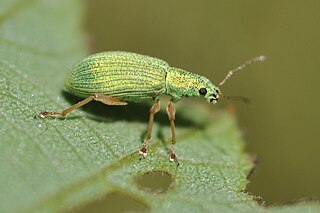
Polydrusus impressifrons, known generally as the pale green weevil or leaf weevil, is a species of broad-nosed weevil in the beetle family Curculionidae. It is found in North America and South Asia.
Polydrusus hassayampus is a species of broad-nosed weevil in the beetle family Curculionidae. It is found in North America.
Polydrusus ochreus is a species of broad-nosed weevil in the beetle family Curculionidae. It is found in North America.
Polydrusus americanus is a species of broad-nosed weevil in the beetle family Curculionidae. It is found in North America.
















